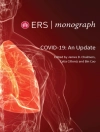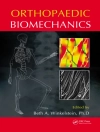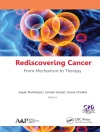<p><strong><em>The definitive guide on chordomas by an international Who’s Who of experts</em></strong></p><p>A rare form of cancer, chordomas are among the most difficult tumors to treat, requiring highly specialized training and surgical expertise. Although generally slow-growing, chordomas present resection challenges due to their proximity to critical structures including the spinal cord, brainstem, nerves, and arteries. Written by an impressive cadre of internationally-renowned experts, this textbook is the most current, concise, and definitive resource on diagnosis and management of this complex pathology.</p><p>Acclaimed surgeons from Brazil, Canada, Japan, Turkey, the USA, and the UK are contributors. The book starts with a historical overview, epidemiology, molecular pathogenesis, cytogenetics, local invasion and metastasis, and pathology. A thorough discussion covers diagnostic radiological and radionuclide imaging such as MRI, PET; SPECT, PET-CT, and PET-MRI, and clinical traits of skull base and spinal chordomas as defined by imaging modalities. Subsequent chapters explore decision making including selecting the most optimal techniques, surgical procedures, specialized topics, and new horizons in chordoma treatment.</p><p><strong>Key Highlights</strong></p><ul><li>Anterior and anterolateral approaches to the clivus</li><li>The use of endoscopy and intraoperative assistive technologies</li><li>Midline subfrontal, middle fossa, extended petrosal, and transcondylar approaches</li><li>Craniospinal fusion techniques following resection</li><li>Surgery for spinal chordomas from the cervical to the sacral region</li><li>Special topics such as radiation, proton beam therapy, Gamma-Knife radiosurgery, and pediatric chordomas and chondrosarcomas</li></ul><p>This is an essential text for neurosurgeons, orthopedic spine surgeons, otolaryngologists, and radiation oncologists. Read and learn from innovators who have mastered the latest state-of-the-art treatment methodologies for chordomas.</p>
สารบัญ
<p><strong>Part I Definition, History, Demographics, Pathology, and Pathogenesis</strong><br>1 Historical Aspects<br>2 The Descriptive Epidemiology of Chordomas<br>3 Evolutionary Origin of the Notochord<br>4 Molecular Biology of Chordomas<br>5 Cytogenetics of Chordomas<br>6 Local Invasion and Metastasis<br>7 Pathology<br>8 Experimental Models of Chordomas<br><strong>Part II Diagnosis of Chordomas</strong><br>9 Radiologic Findings and Differential Diagnosis of Chordomas at the Skull Base<br>10 Radiologic Findings and Differential Diagnosis of Chordomas in the Spine<br>11 Molecular Imaging of Chordomas<br><strong>Part III Surgical Treatment of Chordomas</strong><br>12 Surgical Decision Making in Chordomas<br>13 Choice of the Optimal Surgical Approach for Skull Base Chordomas<br>14 Anterior Approaches to the Clivus<br>15 Endoscopic Approaches for Skull Base Chordomas<br>16 Frontobasal Approaches for Skull Base Chordomas<br>17 Cranio-Orbital-Zygomatic Approach for Chordomas<br>18 Epidural Middle Fossa Approaches<br>19 The Extended Petrosal Middle Fossa Approach<br>20 The Transcondylar Approach to the Clivus<br>21 Craniovertebral Reconstruction after Chordoma Resection<br>22 Surgery for Spinal Chordomas<br>23 Intraoperative Assistive Technologies for Chordoma Surgery<br><strong>Part IV Special Topics in Chordomas</strong><br>24 Chordomas: A Personal Perspective<br>25 Radiation Treatment for Chordomas<br>26 Charged Particle Beams in Management of Clival Chordomas<br>27 Stereotactic Radiosurgery for Chordomas<br>28 Recurrence in Skull Base Chordomas and its Management<br>29 Outcome and Quality of Life of Patients with Chordomas<br>30 Chordomas and Chondrosarcomas in the Pediatric Population<br>31 Future Prospects in the Treatment of Skull Base Chordomas</p>












